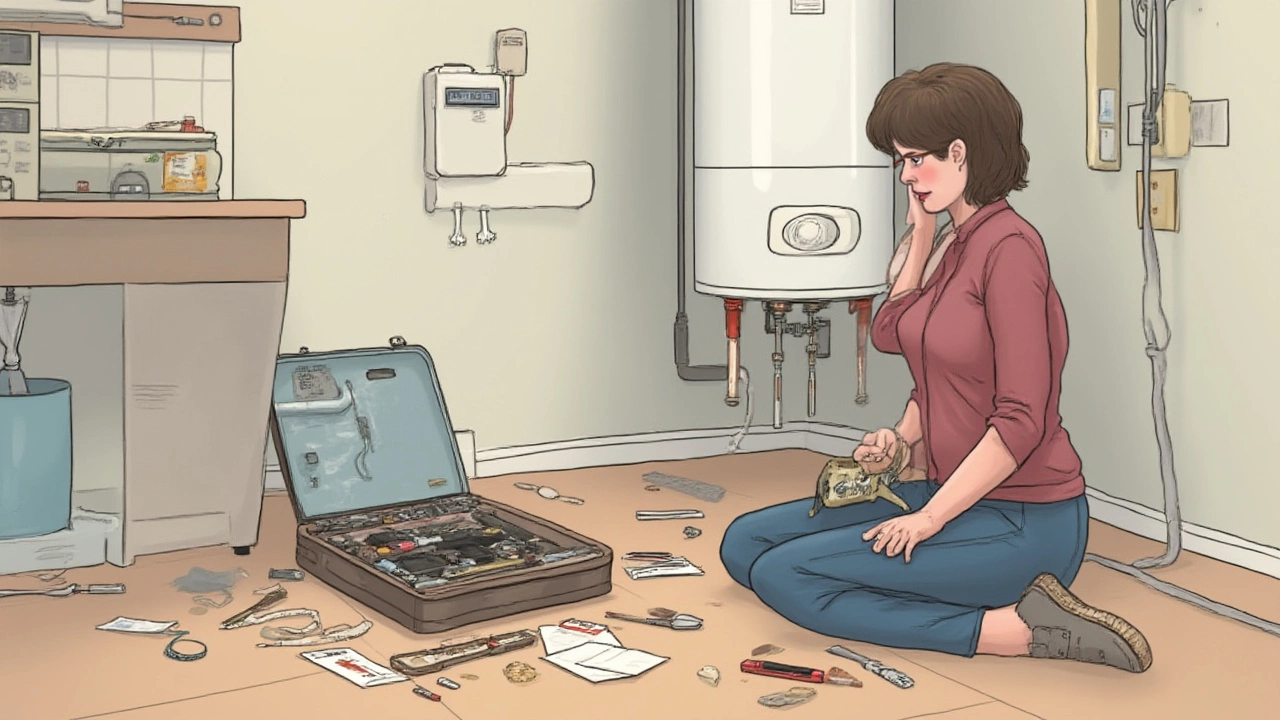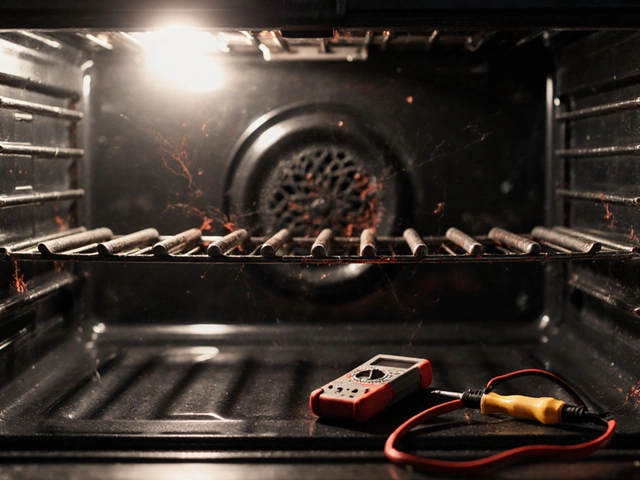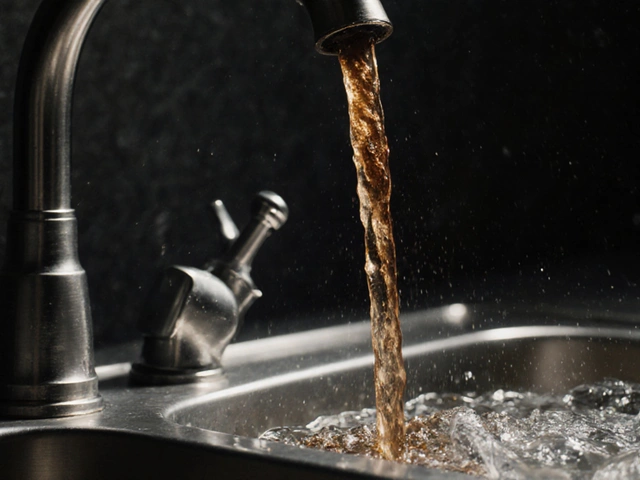Your shower turns icy and suddenly, every dish you wash feels like a punishment. It's usually at the worst moment when the hot water heater chooses to fail. If you're stuck wondering how long it’ll actually take to get hot water flowing again, you’re not alone. The answer isn’t as simple as you’d hope, but there’s plenty of practical info to share, so keep reading—you’ll figure out exactly what you’re up against, and how to speed things up.
What Factors Affect Water Heater Repair Times?
There’s a wild range when it comes to fixing a hot water heater, sometimes as little as twenty minutes, sometimes stretching over days. First up, you’ve got to know what type of water heater you’re dealing with—tankless or storage tank, electric or gas. Electric heaters are pretty straightforward for troubleshooting, but gas heaters add a twist with extra safety checks (think about pilot lights and gas lines). Some repairs are lightning-quick, like flipping a breaker or relighting a pilot flame. Others drag on, like finding a hard-to-get replacement part.
If you’re facing a leaky tank, it’s not really a repair issue—that’s usually a replacement job. For electric tanks, a bad heating element or faulty thermostat are the classic culprits, and those fixes can usually be done within an hour. But if the whole unit’s ancient or the failure is more dramatic, like a rusted tank, expect to spend upwards of half a day, especially if it has to be swapped entirely.
Don’t forget: Getting parts can be where things go sideways. Big-box stores stock common elements and thermostats, but if your heater is older or a less popular brand, special orders take time. Even scheduling an experienced plumber can eat up a day or two, especially during peak repair seasons (winter, anyone?).
The table below breaks down the basics of common hot water heater repairs and how long they typically take:
| Repair Type | Typical Time | Extra Delays |
|---|---|---|
| Resetting breaker, relighting pilot | 20-30 minutes | None |
| Replacing heating element or thermostat (electric) | 45-90 minutes | If parts are available immediately |
| Replacing gas valve or thermocouple | 1-2 hours | May need ordered part |
| Full unit replacement (tank type) | 2-6 hours | Disposal, installation complexity |
| Tankless unit service | 1-4 hours | Diagnosis, special parts |
One interesting fact: According to the U.S. Department of Energy, the average lifespan of a traditional water heater is about 10 to 12 years, and a tankless model can hit 20 years if properly maintained. So, if yours is creeping up in age and frequently acting up, the time spent on repairs might be better invested in a new energy-efficient model.
Step-by-Step: Fast DIY Fixes (If You’re Handy)
If the words “hot water heater repair” give you anxiety, you’re not alone. Still, lots of issues don’t require a pro—just some basic tools and a little nerve. Here’s what you can safely handle yourself, and how long it might take:
- Resetting the Breaker: For an electric heater, check your home’s breaker box. If a breaker is flipped, it takes seconds to reset. But if it trips again, there’s an electrical problem to check.
- Relighting a Pilot: Gas models sometimes have stubbornly unlit pilot lights. Find the instructions on your heater’s label or manual, and expect to spend about ten minutes on this.
- Checking the Thermostat: Sometimes, someone bumps the temperature down. This is a two-minute fix: follow the dials and adjust to your desired setting.
- Draining the Tank: Sediment can cause slow heating or weird noises. Hook up a hose to the drain valve, open it, and let the water (and sediment) run out. It takes about a half-hour for a full tank, but add setup/cleanup time.
Pro tip: Always turn off power (at the breaker or gas valve) before messing with a water heater. A little caution goes a long way. If you see water pooling under the tank, or smell gas, stop—call a pro.
Don’t expect miracles, though. Some repairs look easy, but if you remove an element and find crusty, welded-on minerals or a corroded fitting, you’re deep in plumber territory. A stripped thread or snapped bolt can turn a 30-minute job into an hours-long ordeal. Also, if you’re not sure exactly what’s wrong, guesswork won’t help. Water heaters have safety devices for a reason, and missing something important is a risk not worth taking.

When Should You Replace, Not Repair?
Maybe you’re asking, “Is this worth fixing?” Sometimes, it just isn’t. Repairing an old, leaky, or super-inefficient heater can throw good money after bad. Here’s when replacement usually makes more sense:
- Your tank is rusting or leaking from the body (not the pipes or fittings on top).
- Repairs keep stacking up: you’ve replaced the thermostat, then the heating element, and now something else fails.
- Unit is over 10-12 years old (for a tank) or 18+ years old (for tankless).
- Hot water is running out faster than it used to—signs of massive sediment buildup.
- Utility bills suddenly spike. Older units waste shocking amounts of energy compared to new, insulated models.
Brands matter a bit, but not as much as you’d think. Whether it’s Rheem, A.O. Smith, or Bradford White, most heaters are built to similar standards. Newer models, though, are usually better insulated and often come with digital controls and smarter safety features.
Replacement times vary, but the average tank-style swap by a pro takes about 2-4 hours, including draining, disconnecting, hauling the old one away, and connecting the new. Tricky access (think attic installs or crawl spaces) can push this well past six hours, especially if plumbing has to be rerouted.
Can you swap in a new one yourself? If you’re comfortable with plumbing and gas/electric work, sure—but most folks find peace of mind paying an expert. Permits are a must almost everywhere, and inspectors will check safety codes, so factor that into your timeline.
Tips to Make the Process Smoother and Faster
No one wants to take cold showers longer than needed. So here’s how to get that hot water back quickly—and avoid repeating this whole adventure any time soon.
- Know Your Model: Write down the brand and model number of your heater before calling for help. Plumbers will ask, and you’ll save time.
- Have the Right Tools: Standard wrenches, a hose, and a voltage tester cover most DIY fixes. Specialty parts or tools? Best left to the pros.
- Turn Off Utilities: If there’s water pooling or a burning smell, immediately shut off electricity or gas and the water supply.
- Annual Maintenance Matters: Flushing out sediment once a year and checking the anode rod almost guarantee you’ll stretch your heater’s life.
- Go Tankless? While pricier upfront, tankless heaters are less likely to spring leaks and heat water only when needed. They do take longer to install—sometimes a full day if extra venting or electric upgrades are needed—but they’re often worth it in the long run.
If you’re expecting company or heading into winter, don’t delay repairs. Plumbers and parts both get scarce as the weather turns cold because breakdowns spike. In fact, water heater failures are 40% more common in winter months.
While fixing your hot water heater repair is rarely anyone’s idea of fun, knowing what to expect—and preparing in advance—makes it far less stressful. Hot water is just an hour away for many quick fixes, but pick up the phone or grab your tools fast if you want that next shower to be steamy instead of shocking. If your tank’s old and cranky, think about upgrading now and you’ll probably spend less time fixing and more time enjoying the hot water you’ve been missing.




